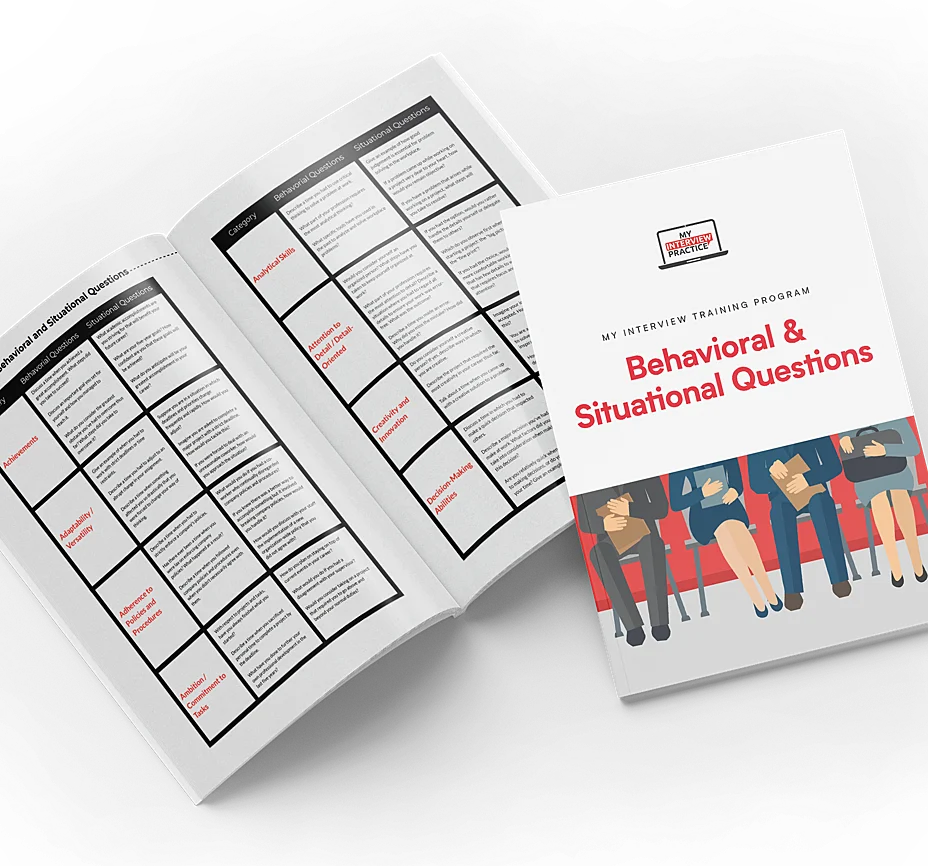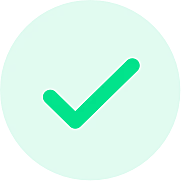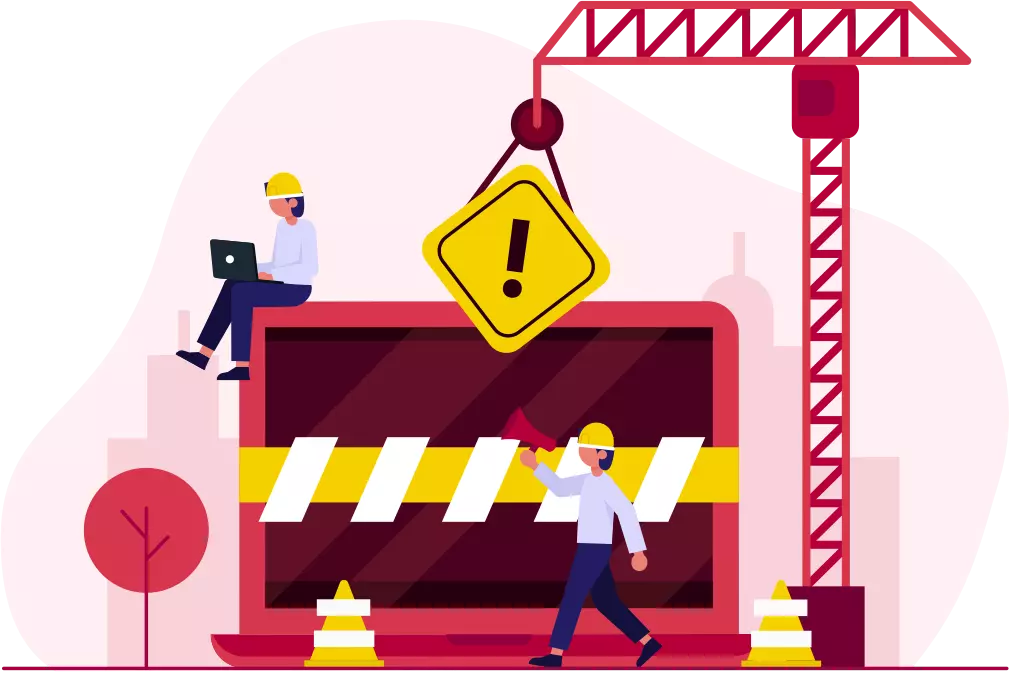 BACK
BACK
UX Designer Interview Questions
Great user experience (UX) design involves crafting seamless, intuitive, and accessible digital experiences that meet user needs. Put another way, UX designers bridge the gap between technology and human behavior, ensuring that products are not only functional but also engaging.
Landing a UX design role requires more than just technical skills. Employers seek candidates who can conduct user research, collaborate effectively with developers and stakeholders, and balance aesthetics with usability. To help you prepare, we’ve compiled 26 essential UX designer interview questions, along with expert insights and sample answers to help you showcase your problem-solving skills, creativity, and user-first approach.
UX Designer Interview Questions
1. How would you define UX design, and how does it contribute to the application development process?
This question assesses your foundational understanding of UX design and how it integrates into product development. Employers want to see that you grasp both the technical and human-centered aspects of UX.
Example Answer
"UX design is the process of creating user-friendly and intuitive digital experiences by focusing on usability, accessibility, and overall satisfaction. It plays a crucial role in software development by ensuring that applications meet user needs efficiently. A well-designed UX enhances engagement, reduces friction, and ultimately leads to a more successful product."
2. Can you describe your UX design process from concept to completion?
Hiring managers want to understand your approach to UX design, from initial research to final implementation. They are looking for a structured, strategic process.
Example Answer
"My UX design process begins with user research, where I conduct surveys and interviews to gather insights. I then create wireframes and prototypes to visualize concepts, iterating based on user feedback. Once the design is refined, I collaborate with developers to ensure seamless implementation, followed by usability testing and adjustments before final deployment."
3. What role does a UX designer play in a software development project?
This question helps interviewers assess how well you understand your responsibilities within a larger development team. They want to see collaboration and problem-solving skills.
Example Answer
"A UX designer serves as the bridge between users and the development team, ensuring the final product is both functional and user-friendly. We conduct research, define user flows, and collaborate with developers to create seamless interfaces. Our goal is to enhance usability, reduce friction, and ensure a product meets both business and user needs."
4. What are the most critical elements to consider when creating a UX design?
Hiring managers want to see if you understand the key principles of good UX design, from usability to accessibility.
Example Answer
"The most important elements of UX design include usability, intuitive navigation, accessibility, and responsiveness. A well-designed interface should be easy to navigate, inclusive for all users, and optimized for various devices. I always prioritize user research to ensure the final design aligns with real-world needs."
5. How do you decide which features to include in a final design and which to eliminate?
This question tests your ability to prioritize user needs while balancing technical and business constraints.
Example Answer
"I prioritize features based on user feedback, business objectives, and feasibility. I start by gathering user insights and identifying the most valuable functionalities. Then, I work with developers and stakeholders to determine which features provide the most impact while ensuring a smooth and intuitive experience. If a feature doesn’t add value or complicates usability, I recommend removing or refining it."
6. When a project doesn't go as planned, what steps do you take to get it back on track?
Every UX project faces challenges. Employers want to see how you handle setbacks and problem-solving.
Example Answer
"When setbacks occur, I first identify the root cause—whether it’s shifting project requirements, misalignment between teams, or unforeseen technical challenges. I then collaborate with stakeholders to reassess priorities and find alternative solutions. In a recent project, unexpected constraints required me to simplify a feature without compromising usability, which resulted in an even more effective design."
7. Do you try to put yourself in the mind of the user when creating a UX design?
Empathy is at the core of UX design. This question assesses whether you prioritize user needs over personal preferences or assumptions.
Example Answer
"Absolutely. Every design decision I make is rooted in user research and behavioral insights. While I have my own perspective, I rely on user personas, journey mapping, and usability testing to ensure my designs truly align with user expectations. For example, in my last project, I adjusted a navigation structure after observing real users struggling to find key features during testing."
8. What is your process for handing off designs to developers?
Smooth collaboration between UX designers and developers is essential for successful product launches. This question evaluates your ability to document and communicate design intent clearly.
Example Answer
"I prioritize clarity and accessibility when handing off designs to developers. I provide annotated wireframes, interactive prototypes, and detailed design specs using tools like Figma or Zeplin. I also schedule review sessions to walk developers through my thought process and remain available for questions throughout the implementation phase to ensure the final product stays true to the design."
9. What’s the difference between UX design and other design disciplines?
Interviewers want to ensure that you understand UX as a distinct discipline that goes beyond aesthetics.
Example Answer
"While traditional design disciplines focus on aesthetics and branding, UX design is centered on usability, accessibility, and user interaction. Unlike graphic design, which emphasizes visual storytelling, UX design is about problem-solving—ensuring a product is intuitive and efficient. It also involves user research, wireframing, and usability testing to refine functionality, not just appearance."
10. Where do you get your inspiration for UX designs?
This question assesses your ability to stay innovative and continuously evolve in your design approach.
Example Answer
"I draw inspiration from real-world interactions, user behavior studies, and industry trends. I follow top UX publications, attend design conferences, and analyze successful apps and websites to see how they solve common usability challenges. Additionally, I often look beyond digital interfaces—observing how physical spaces, signage, and everyday objects guide users in intuitive ways."
11. How do you handle conflicting feedback from stakeholders?
Stakeholder management is a crucial skill for UX designers, as feedback often comes from multiple perspectives.
Example Answer
"I approach conflicting feedback by prioritizing user needs and data-driven insights. When stakeholders have different opinions, I rely on user research and usability testing to provide objective evidence supporting my design decisions. If a compromise is necessary, I propose iterative A/B testing to validate different approaches and find the best solution based on real user behavior."
12. How do you measure the success of a UX design?
UX design isn’t just about creativity—it’s about creating measurable improvements. This question evaluates whether you understand how to track and optimize user experience.
Example Answer
"I measure UX success through key performance indicators like task completion rates, user engagement metrics, bounce rates, and customer feedback. For example, in a recent redesign project, we tracked user drop-off points and optimized the checkout flow, leading to a 25% increase in conversions. Quantitative and qualitative data help ensure that my designs are both effective and user-friendly."
13. How do you balance creativity with usability in your designs?
This question assesses whether you can strike the right balance between innovation and practicality.
Example Answer
"I believe creativity and usability go hand in hand. While I explore fresh, innovative ideas, I always validate them against usability best practices and user feedback. A visually stunning design is meaningless if users struggle to navigate it. I ensure that every creative element enhances functionality rather than distracting from it."
14. What methods do you use to conduct user research?
A strong UX designer relies on user research to make informed design decisions. This question assesses your ability to gather qualitative and quantitative insights.
Example Answer
"I use a mix of qualitative and quantitative research methods depending on the project’s needs. For deep user insights, I conduct interviews, usability tests, and field studies, while surveys and heatmaps help analyze behavior at scale. Recently, I led a project where usability testing revealed friction in a mobile checkout process, leading to design adjustments that improved conversions by 20%."
15. How do you ensure accessibility in your UX designs?
Accessibility is a key part of UX design, ensuring that digital products are usable by people of all abilities. This question evaluates your knowledge of inclusive design principles.
Example Answer
"I prioritize accessibility by following WCAG guidelines, incorporating contrast-checked color palettes, keyboard navigation, and alt text for images. I also conduct usability testing with users of diverse abilities. For example, I once worked on a redesign for a government website, ensuring it met AA compliance standards, leading to improved usability for screen reader users."
16. Can you walk me through a time when a UX decision you made significantly impacted a project?
This behavioral question assesses your problem-solving abilities and the real-world impact of your design choices.
Example Answer
"In a past project, our analytics showed users were abandoning the onboarding process early. After usability testing, I discovered that unclear progress indicators caused frustration. I redesigned the flow with step indicators, inline hints, and a ‘Save for Later’ option, leading to a 40% increase in onboarding completion rates."
17. How do you collaborate with developers to bring your designs to life?
Effective UX designers work closely with developers to ensure designs are implemented correctly. This question tests your communication and collaboration skills.
Example Answer
"I maintain open communication with developers throughout the process, from initial wireframes to final implementation. I use Figma, Zeplin, or Adobe XD to provide detailed design specs and ensure alignment. If technical constraints arise, I work with developers to find practical, user-friendly alternatives without compromising usability."

The Smarter Way to Prepare
Experience a smarter way to prepare with our interview simulator.
18. How do you handle feedback and design critiques?
Designers must be receptive to feedback from stakeholders, users, and developers. This question evaluates how well you integrate constructive criticism.
Example Answer
"I see feedback as a vital part of refining a product. When receiving critiques, I focus on understanding the reasoning behind the suggestions and use data to guide design decisions. In a recent project, a stakeholder requested a visually complex layout, but after A/B testing, we demonstrated that a simplified version improved usability and engagement."
19. What UX design trends do you see shaping the industry in the next few years?
Employers want to know if you stay updated on industry trends and how you incorporate innovation into your work.
Example Answer
"Some of the biggest trends I see shaping UX include AI-driven personalization, voice interfaces, and immersive experiences like AR/VR. I also see a shift toward ethical and sustainable UX, where designers focus on reducing dark patterns and designing for mental well-being. I actively follow UX publications and attend conferences to stay ahead of these trends."
20. Can you give an example of a project where you had to balance business goals with user needs?
Great UX designers find solutions that serve both the company and the user. This question assesses your ability to align business objectives with usability.
Example Answer
"In one project, marketing wanted more lead capture forms, but user testing showed this disrupted the browsing experience. I proposed a progressive disclosure approach, where forms appeared contextually rather than all at once. This satisfied the business goal while improving the user journey, leading to a 25% increase in form completions."
21. How do you balance aesthetics and functionality in your UX designs?
A great UX designer understands that a product must not only look visually appealing but also be easy to use. This question evaluates your ability to strike that balance.
Example Answer
"I approach every design with the mindset that form should always support function. While I incorporate clean layouts and modern design principles, I prioritize usability by ensuring clear navigation, intuitive interactions, and accessibility. One of my past projects involved simplifying a highly decorative interface that confused users. By refining the visual elements and improving contrast, we increased engagement and reduced user errors by 30%."
22. Can you describe a time when you had to advocate for a UX decision that others disagreed with?
UX designers often need to justify their choices to stakeholders who may not fully understand user-centered design. This question assesses your ability to communicate and defend your design rationale.
Example Answer
"In one project, leadership wanted to remove a search bar in favor of a homepage with only curated content. I presented user research showing that 65% of visitors used search as their primary navigation tool. By running an A/B test with and without the search feature, we demonstrated that keeping it improved user retention by 20%. This data helped convince stakeholders to prioritize usability over aesthetics."
23. How do you measure the success of a UX design?
Metrics and user feedback play a crucial role in refining UX. This question evaluates your ability to track performance and iterate based on results.
Example Answer
"I measure success through both qualitative and quantitative data. Key performance indicators like task completion rates, bounce rates, and conversion improvements tell me how well a design is performing. Additionally, I conduct usability tests and gather user feedback to ensure that the experience is intuitive and satisfying."
24. What do you do when faced with conflicting feedback from users, stakeholders, and developers?
Different teams often have different priorities. This question assesses your ability to mediate and find balanced solutions.
Example Answer
"I always start by identifying the underlying concerns behind the feedback. If users and stakeholders have conflicting priorities, I analyze data to see which solution aligns best with business goals and usability principles."
25. How do you approach designing for multiple devices and screen sizes?
With the rise of mobile-first experiences, UX designers must ensure their designs work seamlessly across various platforms.
Example Answer
"I use a mobile-first approach to ensure that designs scale effectively across different screen sizes. I rely on flexible grid layouts, scalable typography, and component-based designs that adjust fluidly."
26. What role does storytelling play in UX design?
Beyond aesthetics and functionality, UX design is about guiding users through a journey. This question assesses your ability to craft experiences that are both intuitive and engaging.
Example Answer
"Storytelling is essential in UX because it helps create a seamless, engaging user journey. Every interaction should feel natural, guiding users from point A to B without confusion. I apply storytelling principles by mapping user flows, ensuring that transitions between steps feel intuitive."
A word of warning when using question lists.
Question lists offer a convenient way to start practicing for your interview. Unfortunately, they do little to recreate actual interview pressure. In a real interview you’ll never know what’s coming, and that’s what makes interviews so stressful.
Go beyond question lists using interview simulators.
With interview simulators, you can take realistic mock interviews on your own, from anywhere.
My Interview Practice offers a dynamic simulator that generates unique questions every time you practice, ensuring you're always prepared for the unexpected. Our AI-powered system can create tailored interviews for any job title or position. Simply upload your resume and a job description, and you'll receive custom-curated questions relevant to your specific role and industry. Each question is crafted based on real-world professional insights, providing an authentic interview experience. Practice as many times as you need to build your confidence and ace your next interview.
| List of Questions |
In-Person Mock Interview |
My Interview Practice Simulator |
|
|---|---|---|---|
| Questions Unknown Like Real Interviews | |||
| Curated Questions Chosen Just for You | |||
| No Research Required | |||
| Share Your Practice Interview | |||
| Do It Yourself | |||
| Go At Your Own Pace | |||
| Approachable |
The My Interview Practice simulator uses video to record your interview, so you feel pressure while practicing, and can see exactly how you came across after you’re done. You can even share your recorded responses with anyone to get valuable feedback.
Check out My Interview Practice
Positions you may be interested in
Get the free training guide.
See the most common questions in every category assessed by employers and be ready for anything.
Get the Guide


